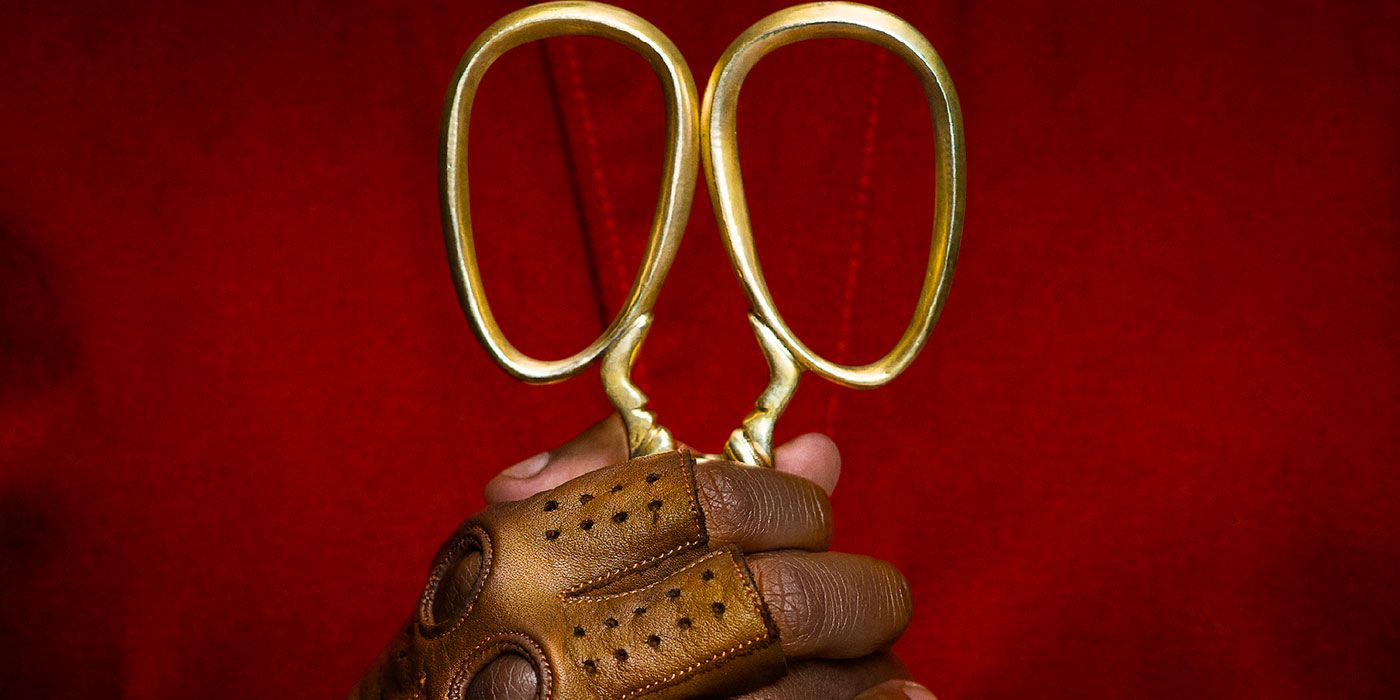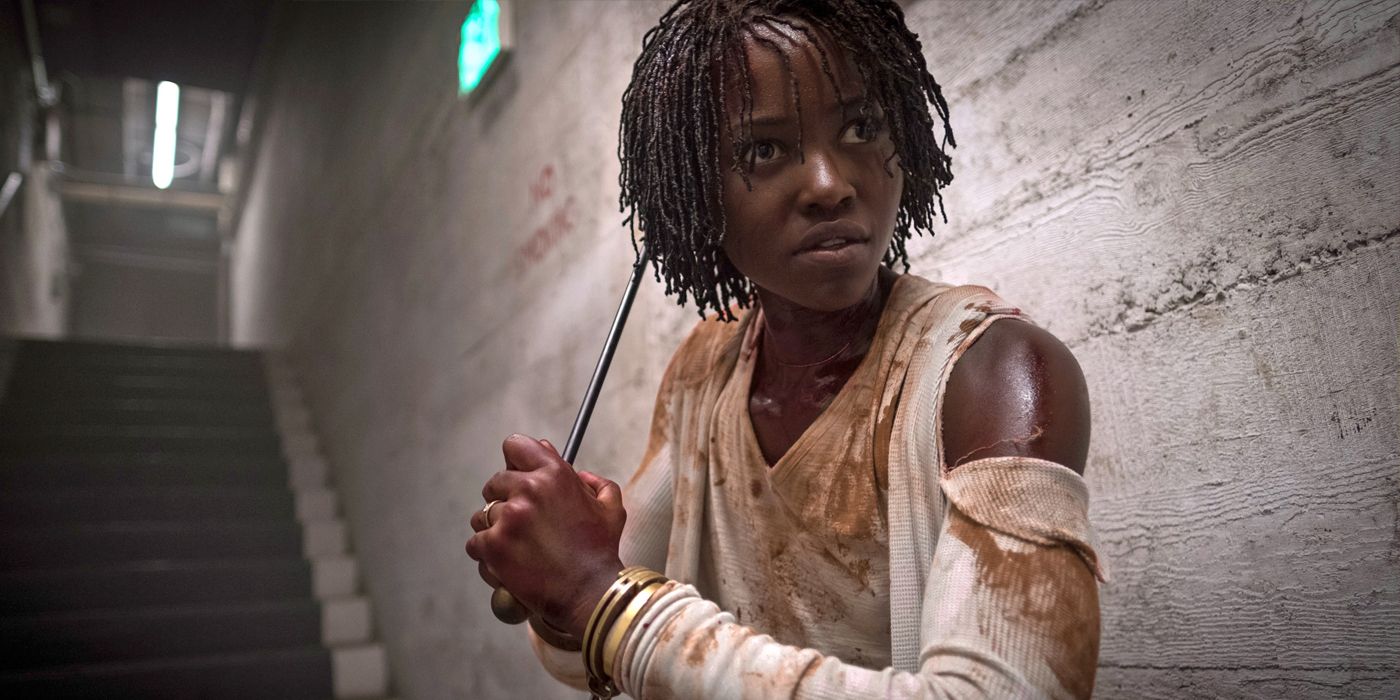A big reason Jordan Peele’s directorial debut Get Out was such a success in 2017 was that it took on relevant issues within the framework of a giddy roller coaster of a thriller. Peele was hailed as an important new voice in horror, garnering as much praise for his social commentary as for his suspense-building. Peele’s new film, Us, could potentially be interpreted as a statement on American society, at least at times, but any intended message is kept to the movie’s subtext. Peele’s primary concern this time is just freaking the audience the heck out.
The scares in Us start in the opening prologue, and never really let up. There’s a lot more violence and spurting blood in this movie than there was in Get Out; the evil in that film was insidious and well-spoken, but in Us, there are howling, lunging monsters, and their intentions are neither hidden nor ambiguous.
RELATED: Jordan Peele's Us Projected to Dethrone Captain Marvel
The movie opens in 1986 with young Adelaide (Madison Curry) wandering away from her parents at the Santa Cruz Beach Boardwalk. Stumbling into a hall of mirrors, Adelaide confronts a girl who looks exactly like her, an experience that leaves her traumatized for years.
In 2019, Adelaide (now played by Lupita Nyong’o) is a seemingly well-adjusted adult with a husband and two kids, headed back to the Santa Cruz area for a family vacation. She still holds on to her childhood trauma, though, and she gets jumpy when her dorky husband Gabe (Black Panther’s Winston Duke) suggests spending the day at the beach. She keeps her daughter Zora (Shahadi Wright Joseph) and son Jason (Evan Alex) close, and she insists they head back before dark.
It turns out that Adelaide is right to be worried; once the family return to their isolated house and the sun goes down, they discover an ominous foursome standing in their driveway. Dressed in blood-red jumpsuits and carrying pairs of gold scissors, the intruders are doppelgangers of Adelaide’s family, led by the adult version of the girl she encountered as a child. They haven’t come for a friendly visit, and soon all four family members are fleeing for their lives from distorted mirror images of themselves. Adelaide’s double (called Red) is the only one who speaks, albeit in a raspy, strained tone, and the rest of the invaders bellow or bark like animals as the chase down their prey.
RELATED: Us: The Rotten Tomatoes Score for Peele's Horror Film Is Still Scary High
The first half of the movie is a heightened version of a home-invasion horror movie like The Strangers or Them, with the added creepiness of the main characters being stalked by killers who look just like them. There’s a dark, fable-like quality to the story of a family terrorized by their own shadows, and Peele drops the audience right into the middle of the horror. Who are these creatures? Where did they come from? What do they want? Often the scariest part is not knowing, and then having to deal with that uncertainty.
Peele isn’t really interested in uncertainty, though, and about halfway through, the movie shifts gears, widening the scope of the story in a way that delivers more expansive horrors, but also loses the intimacy and intensity of the family’s ordeal. Red delivers a monologue near the end of the movie detailing every step of her plan in a way that echoes James Bond villains pontificating while they have the hero tied up, and it makes the story less creepy the more she explains. And, unfortunately, there’s a final twist that rivals the worst of M. Night Shyamalan for both its obviousness and its uselessness.
RELATED: Jordan Peele's New Us Poster Will Literally Scare Your Face Off
Even with the narrative issues in the third act, Peele remains a master at generating suspense and jolting the audience, and the main performances all enhance his efforts. Nyong’o is fantastic as both the fiercely protective Adelaide and the vindictive Red, and the other three lead actors all get the chance to embody dangerous, evil versions of their characters. There’s no overt comic relief like there was in Get Out, but Gabe is quick with the dad jokes in the early part of the movie, and Duke gives him a nervous sense of humor even when things turn deadly.
Peele’s visual sense is equally accomplished. The doppelgangers are scary before they even make a move, just based on the costume design and the lighting. The score from Michael Abels keeps the audience on edge without every becoming intrusive, and Peele makes good use of incongruous pop songs (a now-standard horror-movie device) to add to the feeling of the world spinning slowly out of control. Viewers may be slightly baffled at times, especially in the story’s home stretch, but they’ll never be bored or complacent.
Us probably won’t attract the same kind of awards attention as Get Out, or inspire as many think pieces, but its unrelenting creepiness is more than enough to cement Peele’s position as a master horror filmmaker.


